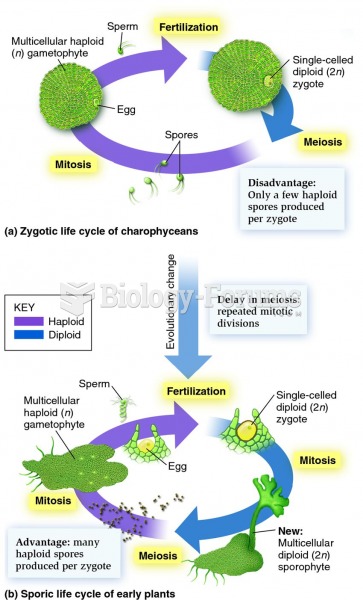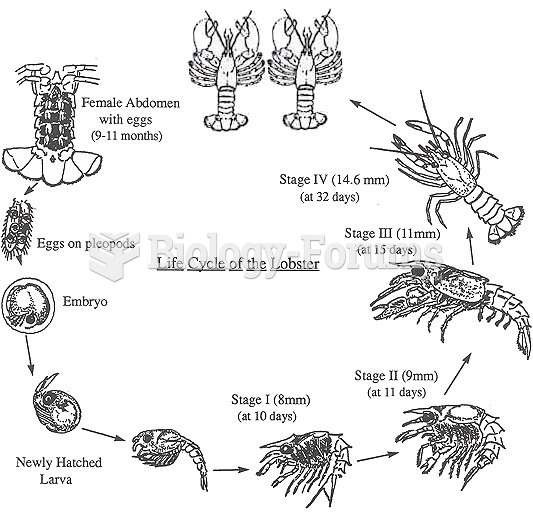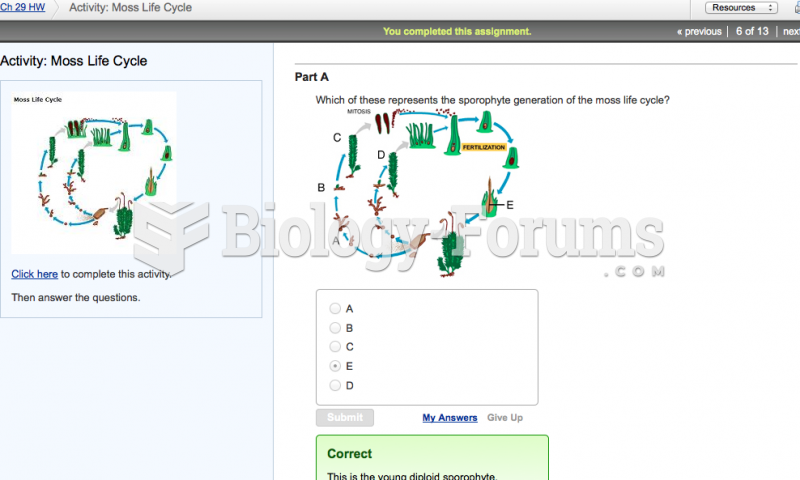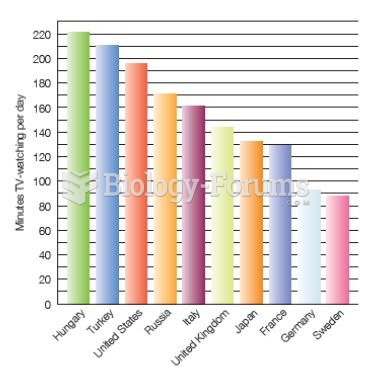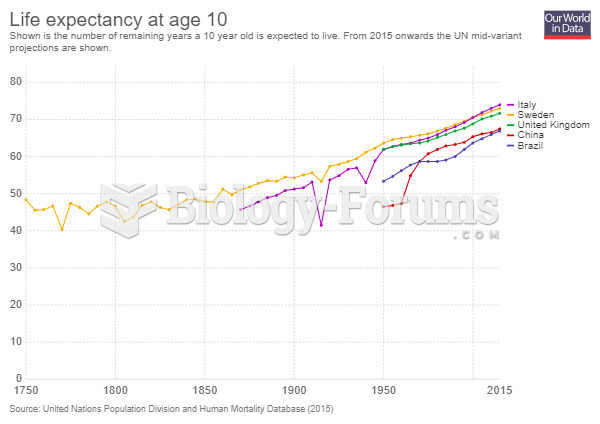|
|
|
Did you know?
Medication errors are three times higher among children and infants than with adults.
Did you know?
The first successful kidney transplant was performed in 1954 and occurred in Boston. A kidney from an identical twin was transplanted into his dying brother's body and was not rejected because it did not appear foreign to his body.
Did you know?
There are approximately 3 million unintended pregnancies in the United States each year.
Did you know?
The first monoclonal antibodies were made exclusively from mouse cells. Some are now fully human, which means they are likely to be safer and may be more effective than older monoclonal antibodies.
Did you know?
Vaccines prevent between 2.5 and 4 million deaths every year.


